Hawker Siddeley HS 748
The Hawker Siddeley HS 748 is a medium-sized turboprop airliner originally designed and initially produced by the British aircraft manufacturer Avro. It was the last aircraft to be developed by Avro prior to its dissolution.
| HS 748 | |
|---|---|
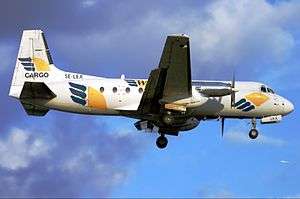 | |
| West Air Sweden HS 748 Srs2/244 | |
| Role | Airliner |
| National origin | United Kingdom |
| Manufacturer | Avro Hawker Siddeley Hindustan Aeronautics |
| First flight | 24 June 1960 |
| Status | Active service |
| Primary users | Indian Air Force Indian Airlines Air North VARIG |
| Produced | 1961–1988 |
| Number built | 380 |
| Unit cost |
US$1.6M (1972)[1] |
| Variants | Hawker Siddeley Andover BAe ATP |
The HS 748 was developed during the late 1950s as a move to re-orientate the company towards the civil and export markets. Powered by the popular Rolls-Royce Dart turboprop engine, it was specifically designed as a modern feederliner to act as a replacement for the aging Douglas DC-3s then in widespread service. Originally intended to seat a smaller number of passengers, market research indicated that a seating capacity of around 40 passengers would be optimal for the type. As a means to differentiate the new airliner from competitors, it was designed to possess a high level of performance, including its short takeoff and landing (STOL) capabilities and overall ruggedness. First flying on 24 June 1960, the series 1 HS 748 entered revenue service during the following year.
Once in service, the HS 748 found itself a niche within the short-haul market. Several different models would be developed of the regional airliner, typical improvements being the adoption of increasingly powerful Dart engines and a higher gross weight. Perhaps the most distinct variant was the HS 780 Andover, a dedicated military transport model developed for the Royal Air Force (RAF) that featured a large rear loading ramp and a squatting main landing gear to assist in loading bulky freight items. By 1988, the year in which production of the type was terminated, 380 aircraft had been produced between Hawker Siddeley (the owning company of Avro) and Indian aviation company Hindustan Aeronautics Limited (HAL). During the 1990s, a larger, stretched development of the HS 748, the BAe ATP, was developed and had attempted to compete with market leaders such as the de Havilland Canada Dash 8 and ATR 42, but saw only limited sales prior to production being terminated.
Development
Background
Following the release of the 1957 Defence White Paper, in which then-Minister of Defense Duncan Sandys announced that the termination of almost all manned military aircraft development, aircraft manufacturer Avro decided that it should place a greater emphasis upon the civilian market. Ten years prior, it had launched a civilian airliner, the Avro Tudor series, but this had encountered few sales; thus, during 1958, it was decided to commence work upon a clean-sheet design, which would eventually become the HS 748. On 9 January 1959, the existence of the project, then referred to as the Avro 748, was announced to the public.[2]
By this point, the four-engined Vickers Viscount had already secured the larger end of the short-haul market, therefore Avro decided that it would design a smaller regional airliner, powered by a pair of Rolls-Royce Dart turboprop engines. It was envisioned that this aircraft would be a suitable replacement for the many DC-3 Dakotas that were by then reaching the end of their economic lifespan. According to aviation periodical Flight International, a major goal for the design team was to produce an aircraft that would be capable of operating from any airfield that the DC-3 could be.[3]
Early intentions for the airliner was of a 20–30 seat aircraft, adopting a somewhat similar configuration to the future rival Fokker F27 Friendship; however, following discussions with several potential customers, the company opted for a low-wing 40-seat configuration. It was this latter arrangement that was chosen for the 748 project. Another important focus for the prospective airliner was compliance with both British and American standards of airworthiness; accordingly, it would be one of the first medium-sized aircraft to incorporate fail-safe design principles for its structure in place of the then-common safe-life principles being practiced.[3] The airframe effectively lacked any imposed lifespan; during development, it was successfully tested using a water tank for up to the equivalent of 100,000 flight hours.[3]
Avro was not the only company to see the potential for a DC-3 replacement and, by this point, work on the 748's direct competitor, the Dutch-built F27 Friendship, was well advanced. To differentiate itself from the competition, Avro decided to focus its efforts upon achieving a more rugged design that offered superior short takeoff and landing (STOL) performance, which enabled the prospective airliner to be operated from smaller and more austere airports, including those without modern runways.[4] This STOL capability was accomplished via several features, including the adoption of a long, high lift wing, which was fitted with a unique single slot flap with a hinged flap tab at the trailing edge. This wing was mounted low on the fuselage with dihedral from the root, allowing for good overall ground clearance and the easy mounting of strong landing gear. Operationally, pilots were provided with a choice of three takeoff flap settings to select the level of STOL performance required.[3]
Another supportive feature of the 748 was a design decision to adopt straightforward systems and use proven components where realistically possible.[3] For operator convenience, the engines were provided with an internal ignition system; various other systems and structures throughout the airliner were designed to be easy to inspect and to perform repairs upon, even when at unprepared airstrips with limited equipment available. Likely as a consequence of these favourable qualities, the 748 quickly attracted the attention of a variety of airlines, particularly those that typically operated in remote areas, which has been attributed to its ability to operate from short rough fields without any ground service equipment while being capable of hauling payloads in excess of 10,000 lb.
Into flight
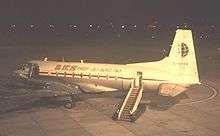

On 24 June 1960, the first Avro 748 made its maiden flight from the company's Woodford, Cheshire aircraft factory.[4] Flight testing of the two prototypes quickly validated the type's short-field performance. Eighteen Avro 748 Series 1 aircraft were produced; during April 1962, the first production aircraft were delivered to launch customer Skyways Coach-Air Limited. However, the majority of the series 1 were export sales to operator Aerolíneas Argentinas. During the early 1960s, Avro's individual identity within the Hawker Siddeley Group was expunged, after which the airliner was marketed by the parent company as the HS 748.
After the initial batch of series 1 aircraft was completed, production transitioned to the improved series 2. The series 2 was largely similar to its predecessor, principally benefiting from the adoption of more powerful Dart RDa 7 Mk 531 engines and an increased gross weight. According to aviation periodical Flight International, during 1960, the basic price for a new Avro 748 Series 1 was £176,000, while that of the corresponding Avro 748 Series 2 was reportedly £196,000.[2]
During 1967, the series 2A was introduced, which was the same basic aircraft powered by Mk. 532 engines along with a further increase in gross weight. From 1971 onwards, several new options were made available to customers, including a large freight door in the rear cabin and a strengthened cabin floor. During 1979, the Series 2B was introduced, which saw a 4-foot increase in wingspan, the adoption of Mk 536-2 engines, along with a modernised passenger cabin, and various improvements to the fuel, water methanol injection system, and engine fire protection systems.
During 1976, Eric Johnson, sales engineering manager of Hawker Siddeley Manchester, stated that the company was studying options for equipping a model of the HS 748 with turbofan engines, and that a preferred powerplant at that point was the Rolls-Royce/SNECMA M45H, as used on the VFW-Fokker 614 jetliner.[3] Other changes would likely have been incorporated, including the addition of lift dumpers and adaptive brakes for better landing performance, while electrical, hydraulic and air conditioning systems would be redesigned; externally, a dihedral would have to be introduced to keep the tailplane clear of the jet exhaust. It was envisioned that the reengined aircraft could offers larger seating arrangements of up to 64 seats.[3]
In addition to the British production line, manufacture of the 748 was also performed overseas. Early on, India had placed orders for the type.[2] Both the 748 Series 1 and Series 2 were licence-produced in Indian manufacturer Hindustan Aeronautics (HAL), aircraft produced by the company were designated HAL-748. On 1 November 1961, the first Indian-assembled HAL-748 made its first flight.[4] By the end of production, HAL had completed 89 Indian-built aircraft, 72 of which were for the Indian Air Force and 17 were delivered to national flag carrier Indian Airlines.
While the HS 748 was originally intended to be marketed principally towards the civilian market, numerous examples were sold to military customers around the world. Hawker Siddeley used the design as the basis for the HS 780 Andover, a military transport aircraft developed and produced for the Royal Air Force. In terms of its design, the HS 780 was broadly similar to the 748, differing primarily by its redesigned rear fuselage and empennage, which incorporated a large rear loading ramp and a squatting main landing gear to better facilitate the loading of bulky freight items.[4]
During 1988, production of the HS 748 was terminated, while the last British-assembled aircraft made its first flight on 1 December of that year.[4] According to BAE Systems, a successor company to Hawker Siddeley, during the type's production life, a total of 381 aircraft had been produced, when including both the Andover and HAL-built examples.[4]
Operational history
Within its first decade of its availability, sales of the HS 748 had reportedly been relatively brisk; by 1976, the sale of 312 aircraft had been recorded, of which 259 had been to export customers.[3] Within ten years of its launch, India had emerged as the largest single market for the airliner, Indian Airlines being the largest HS 748 operator with a fleet of 26 aircraft.[5] It had been popular with numerous commercial operators, across the Caribbean and Latin America alone, 63 HS 748s were in operation with 11 separate operators.[5]
The HS 748 had been able to achieve some triumphs over competing rivals, including the F27 Friendship. Philippine Airlines had been the F27's largest operator prior to its decision to replace both it and its remaining DC-3s with the HS 748, which represented a significant sales coup for the latter.[3] Other major civil operators included Aerolineas Argentinas, VARIG, Thai Airways, LAN-Chile, and Bouraq Airlines.[4] Several of these operators would utilise its STOL capabilities in their services; according to Flight International, over one-third of all scheduled operations were reportedly involved operations from rough airstrips with minimalist facilities.[5]
Another key market for the HS 748 was the executive role; the type was repeatedly procured to serve as the designated aircraft for various heads of state, including of Argentina, Brazil, Chile, India, Venezuela, Zambia, Thailand and the United Kingdom.[5] The HS 748 was one of the last planes to be flown by noted aviator and business magnate Howard Hughes. During 1972, Hughes performed several flights of the type, each time accompanied by Hawker Siddeley test pilot Tony Blackman, flying from the company's airport in Hatfield.[6][7]
The Australian military purchased several aircraft; specifically, the Royal Australian Air Force (RAAF) procured a fleet of ten HS 748s, the first of which arriving in 1968, for navigation training and transporting VIPs. The Royal Australian Navy (RAN) operated a pair of HS 748s starting in 1973 as a navigational trainer. Following Cyclone Tracy, relief aid was delivered across Darwin, Northern Territory using the type; after being fitted with various electronic countermeasures (ECM) during the late 1970s, HS 748s were also used for electronic warfare training.
In a typical passenger configuration, the HS 748 can accommodate around 40–48 economy class seats in a four abreast layout; however, the majority of later-serving passenger HS 748s were typically operated as quick change combis. These aircraft are fitted with a movable bulkhead that divides the main cabin, housing between 4 and 40 seats in the rear section while cargo is placed the forward section.[5] The 748 has also been widely used as a pure freighter, having a typical max payload of about 12,000 lbs. Several carriers have used the 748 as a bulk fuel hauler, in which capacity it is normally with either seven or eight fixed tanks in the cabin, possessing a total capacity of about 7,500 L (1,600 imp gal; 2,000 US gal).[9]
The ICAO designator as used in flight plans is A748.
Variants
- 748 Series 1 – The original Avro 748 twin-engined short / medium-range airliner, powered by two Rolls-Royce Dart RDa 7 Mk 514 turboprop engines. 24 built.[4]
- 748 Series 2 – The Series 2 entered production in 1961 with a higher take-off weight and Mk 531 engines. 111 built.
- 748 Series 2A – Introduced in 1967, with a further increase in take-off weight and Mk 532 or 534 engines. 157 built, making the 748 one of the more successful British airliners and the 2A the most popular variant.
- 748 Series 2B – The main production model after Hawker-Siddeley was absorbed by British Aerospace, the 2B featured a 4-foot increase in wingspan, increased gross weight, Mk 536 engines, a modernized cabin, and systems improvements. 28 built.
- Super 748 – Basically the same as the 2B but fitted with engine hush kits. 8 Built.
- Hawker Siddeley HS780 Andover – Modified version of the 748 design for the Royal Air Force. Fitted with kneeling undercarriage, raised tail unit and rear loading ramp.
- Coastguarder – A maritime patrol version.[4][10]
- 748 Andover – Military passenger transport versions of the 748.[4]
- HAL 748 – Licence production by Hindustan Aeronautics Limited at Bangalore India. Indian aircraft were later modified for a variety of roles including a trials aircraft for an Airborne Early Warning version fitted with a large radome, known as the Airborne Surveillance Platform (ASP).[4] 89 built.
- HAL 748 Series 2M – Production for the Indian Air Force (the last 20 built) were Series 2M aircraft with a large freight door.
Accidents and incidents
- On 10 July 1965, Avro 748-101 Series 1 G-ARMV of Skyways Coach-Air was written off in a landing accident at Lympne Airport. The 51 people on board survived. This was the first accident that resulted in a write-off on an Avro 748 / HS748.
- On 15 August 1967, two accidents involving HS-748-222 Series 2 aircraft of Channel Airways Limited, occurred roughly 90 minutes apart at Portsmouth Airport. In the first incident, G-ATEK, operating a scheduled service from Southend to Paris, via Portsmouth, landed in rainy conditions and was unable to stop in the available distance on the grass runway. The aircraft slid sideways, left the runway and stopped on an embankment. Some 90 minutes later, aircraft G-ATEH, operating a scheduled service from Jersey, via Guernsey to Portsmouth, landed and slid on the runway, crashed through a perimeter fence and came to rest on the main Eastern Road. There were no injuries in either accident, but both aircraft sustained serious damage. An AIB investigation[11] reported that "both accidents were caused by inadequate braking which had resulted from the extremely low coefficient of friction provided by the very wet grass surface over the hard, dry and almost impermeable sub-soil".
- On 4 February 1970, Aerolíneas Argentinas Flight 707, an Avro 748–105, crashed into the ground after the pilots lost control of the aircraft. The aircraft crashed at Loma Alta, Argentina and killed all 37 on board.
- On 9 December 1971, Indian Airlines, an HS 748, near Chinnamanur was descending into Madurai when it flew into high terrain about 50 mi (80 km) from the airport, killing the four crew members and 17 passengers. There were ten survivors among the passengers. The accident occurred in reduced visibility during daylight hours.[12][13][14]
- 20 January 1976 – a TAME HS 748-246 Series 2A registration HC-AUE crashed while flying over mountainous terrain at 10,000 feet. The aircraft struck trees with its right wing, lost control and crashed into the side of the mountain. The plane was en route from Loja to Simón Bolívar International Airport in Guayaquil, Ecuador. Six crewmembers and 28 passengers were killed; 8 passengers survived.
- 3 March 1978 – Línea Aeropostal Venezolana Hawker Siddeley HS 748 crashed on departure from Simón Bolívar International Airport, Venezuela, all 46 on board are killed.
- 7 September 1978 – Air Ceylon HS 748 4R-ACJ destroyed by fire while parked at Colombo-Ratmalana, resulting from detonation of bomb placed on board by terrorists. There were no fatalities.
- 31 July 1979 at Sumburgh Airport in the Shetland Islands, Scotland; Dan-Air Flight 0034, an HS 748 series 1 (registration G-BEKF) operating an oil industry support flight crashed. The aircraft failed to become airborne and crashed into the sea. The accident was due to the elevator gust-lock having become re-engaged, preventing the aircraft from rotating into a flying attitude. The aircraft was destroyed and 17 persons died from drowning.
- 22 August 1979 – An aircraft mechanic (a former non-commissioned officer of the Colombian Air Force), stole a military HS 748 (FAC-1101) from a military hangar at the Eldorado International Airport in Bogotá, Colombia. According to the news, this person stole the aircraft with the intention of crashing it against his parents' house. After some minutes in the air, it ran out of fuel and crashed, killing the impromptu pilot and three people on the ground.[15]
- On 26 June 1981, Dan-Air Flight 240, an HS 748 2A mail flight from Gatwick Airport to East Midlands Airport crashed at Nailstone killing the 3 crew members. While descending, the right-hand rear door detached, struck the horizontal tail plane and became lodged on its leading edge. Control was lost, and the aircraft entered a steep dive. During the dive, the wings and tail plane failed due to overstressing.
- On 19 August 1981, Indian Airlines Flight 557, an HAL 748 (VT-DXF) overshot the runway at Mangalore-Bajpe Airport in wet weather. The aircraft came to a halt just beyond the runway edge. There were no fatalities but the damaged aircraft was written off. One of the passengers on board was Veerappa Moily ex-Cabinet Minister for Law, Justice and Company Affairs in the Government of India.[16][17]
- 11 October 1983 – Air Illinois Flight 710 carrying 10 people crashed at night in a thunderstorm between Pinckneyville and Tamaroa, IL. The flight originated at Chicago's Meigs Field and had stopped at Springfield, IL. The left generator had failed after takeoff and the first officer had mistakenly isolated the right generator. Attempts to restore the right generator were unsuccessful. The captain elected to continue to the destination rather than return to the nearby airport. The cloud base was at 2000 feet MSL, but ATC could not provide an IFR below 3,000 feet just before the crash. The crew indicated a total loss of electrical power. The left generator drive shaft had sheared.[18] All ten passengers and crew were killed.[19]
- 27 June 1987 – Philippine Airlines Flight 206 crashed onto a mountain after poor visibility hampered the pilot's attempt to land at Loakan Airport in Baguio, Philippines. All 50 passengers and crew were killed.
- Wednesday 10 November 1993. Nothland Air Manitoba. Hawker Siddeley HS-748-234 Srs. 2A. Registration C-GQTH. Departure airport Sandy Lake Airport, Ontario (ZSJ/CZSJ), Canada "about 600 km northeast of Winnipeg.". The aircraft took off from runway 29 at Sandy Lake at approximately 1805 and entered a right turn. Witnesses indicate that the aircraft appeared to fly at a lower than normal height throughout the turn. After turning through approximately 120 degrees, the aircraft descended into 100-foot trees and crashed. The aircraft struck the ground about 1 nm northwest of the airport. Contributing factor was the loss of AC power to some of the flight instruments the reason for which could not be determined. All 3 crew members and 4 passengers perished.
- 28 April 1995 – Sri Lanka Air Force Avro 748 CR835 an HS 748 serial CR835 (4R-HVB) was hit by an SA-7 missile fired by the LTTE immediately after takeoff from Palaly/KKS/Jaffna. All 45 occupants on board were killed. Crew managed to return the aircraft for landing but the starboard wing collapsed on short finals 295 meters from threshold due to an extensive fire in No-2 engine.[20]
- On 11 January 1999, ASTE HAL-748 ASP/H-2175, an HAL 748 crashed into the ground after the pilots lost control of the aircraft. The aircraft crashed at Attur, Tamil Nadu, India and killed the 2 crew and 6 passengers.
- 5 September 1999 – Necon Air Flight 128 from Pokhara to Kathmandu, a BAe 748-501 Super 2B (9N-AEG), collided with a communication tower of Nepal Telecommunication Corporation and crashed in a wooded area 25 km west of Kathmandu, while approaching Tribhuvan International Airport. All 10 passengers and 5 crew were killed.
- 1 June 2002[21] – Former South African cricket captain Hansie Cronje's scheduled flight home from Bloemfontein to George had been grounded, so he hitched a ride as the only passenger on a cargo flight in an HS 748. Near George airport, the pilots lost visibility in cloud, and were unable to land, partly due to unserviceable navigational equipment. While circling, the plane crashed into the Outeniqua mountains northeast of the airport. Cronje, aged 32, and the two pilots died. South Africa's High Court reached the conclusion that "the death of the deceased Wessel Johannes (Hansie) Cronje was brought about by an act or omission prima facie amounting to an offence on the part of pilots."[22][23] However, with Cronje's involvement in match-fixing, theories that Cronje was murdered on the orders of a cricket betting syndicate flourished after his death.[24]
- 12 June 2012[25] – A Wasaya Airways Hawker Siddeley 748 caught fire during ground operations at Sandy Lake First Nation in Northwestern Ontario. No injuries were reported. The aircraft burned completely; only the left wing and nacelle survived.
- 17 February 2014 – an HS 748-371 Srs 2B crash landed at Rubkona airport in South Sudan killing one crew member and injuring the other three. The cargo plane was carrying humanitarian Aid to South Sudan.[26]
- 14 November 2014[27] – A BAe HS-748 crashed on approach to Panyagor airstrip in South Sudan, killing two crew members and seriously injuring a third crew member. The cargo plane was on a charter flight for the Lutheran World Federation and carrying relief supplies from Juba, South Sudan.
Operators
Civil operators
As of July 2018 a total of 12 HS 748 aircraft (all variants) remained in airline service. As of September 2018 Transport Canada (TC) list 13 HS 748 in Canada with a current Certificate of Registration and 1 with a cancelled certificate.[28] Current operators are:[29]
- Air Creebec (2)
- Air Inuit (1 as per reference above, 4 as per TC)
- Air North (1 as per reference above, 2 as per Air North,[30] 4 as per TC)
- Avro Express (1)
- Bismillah Airlines (2)
- Planes For Africa (2)
- Safe Air Company (1)
- Wasaya Airways (2 as per reference above, 3 as per TC)
Former civil operators
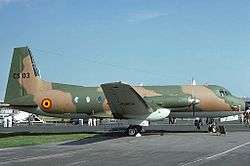

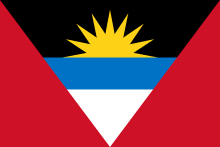
- LIAT Airlines

- Aerolineas Argentinas


.svg.png)
- Bop Air (Operated one Aircraft]][32]

- Varig (11) [one Avro 748 Series 2 prototype and 10 production aircraft]
.svg.png)
- Air Gaspé
- Air Manitoba
- Austin Airways
- Calm Air
- First Air (9)
- Midwest Airlines
- Quebecair
- Transair (Canada)
- West Wind Aviation


- LAN Chile



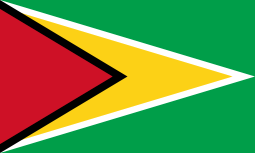
- Guyana Airways (now defunct)

- Bouraq Indonesia Airlines (now defunct)
- Bali Air (now defunct) (4)

- Vayudoot (now defunct)
- Indian Airlines (now Air India)

- Ryan Air (2) 1986–1989 Inaugurating the Dublin-London (Luton) Service


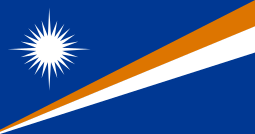

- Aeronaves de Mexico (now Aeromexico)
- Aerocaribe (1) (Bought From Atlantic Airlines de Honduras)





- Polynesian Airlines (2)

- Air Cape (South Africa)
- AirQuarius (Operated 6 aircraft)[33]
- Executive Aerospace (Operated 13 aircraft)[34]
- Intensive Air
- Stars Away Aviation
- South African Airways (Operated 5 aircraft 1970-1983)[35]

- Aero Lanka (1)
- Air Ceylon (2)
- Lionair (1)


- Trinidad and Tobago Air Service (TTAS)

- British Airways
- Dan Air
- Emerald Airways
- Janes Aviation (2)
- Skyways Coach-Air Limited (5)

- Air Illinois
- Air Virginia (AVAir)
- Cascade Airways


Current military operators

- Benin Air Force – One remains in service as of December 2017.[36]

- Border Security Force Air Wing
- Indian Air Force : BH-572 Used by HAL (Hindustan Aeronautics Limited) Chairman
- Indian Air Force : 57 remain in service as of December 2018.[37]

- Nepalese Army Air Service – One in service as of December 2017.[38]

- Republic of Korea Air Force: First used in April 1974.

Former military operators
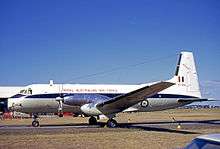
.svg.png)
- Royal Australian Air Force
- School of Air Navigation RAAF/No. 32 Squadron RAAF – aircraft operated in navigation trainer configuration between 1968 and 2004
- No. 34 Squadron RAAF – aircraft operated in VIP configuration between 1967 and 1996
- Royal Australian Navy
- Fleet Air Arm (RAN) – operated between 1973 and 2000
- No. 723 Squadron RAN
- No. 851 Squadron RAN
- Fleet Air Arm (RAN) – operated between 1973 and 2000
.svg.png)
- Belgian Air Force (Three operated from 1976, sold in 2001–2002 to Benin and replaced by four Embraer Regional Jets)
- 21 Squadron

- Brazilian Air Force
- Twelve aircraft operated between 1962 and 2005 as C-91.
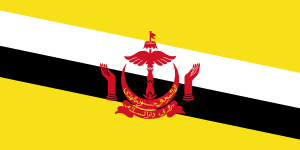


- Military of Burkina Faso




- Military of Madagascar




- Venezuelan Air Force
- Venezuelan Navy

Specifications (Super 748)
Data from Jane's Civil and Military Aircraft Upgrades, 1994–95,[39] BAE Systems[4]
General characteristics
- Crew: 2 plus 1 passenger attendant (if required)
- Capacity: 40–58 passengers / 11,323 lb (5,136 kg) payload
- Length: 67 ft 0 in (20.42 m)
- Wingspan: 102 ft 5.5 in (31.229 m)
- Height: 24 ft 10 in (7.57 m)
- Wing area: 829 sq ft (77.0 m2)
- Aspect ratio: 11.967
- Airfoil: root: NACA 23018; tip: NACA 4412[40]
- Empty weight: 27,126 lb (12,304 kg)
- Max takeoff weight: 46,500 lb (21,092 kg)
- Fuel capacity: 1,440 imp gal (1,730 US gal; 6,500 l) in two wing integral tanks
- Powerplant: 2 × Rolls-Royce RDa.7 Dart Mk 536-2 turboprop engines, 2,280 shp (1,700 kW) each equivalent
- Propellers: 4-bladed Dowty Rotol constant-speed fully-feathering propellers, 12 ft 0 in (3.66 m) diameter
Performance
- Cruise speed: 244 kn (281 mph, 452 km/h)
- Range: 926 nmi (1,066 mi, 1,715 km) (with max payload)
- Service ceiling: 25,000 ft (7,600 m)
- Wing loading: 56.1 lb/sq ft (274 kg/m2)
- Power/mass: 0.0981 hp/lb (0.1613 kW/kg)
Preserved aircraft
Australia
.jpg)
- HS 748 Srs2/228, c/n 1601 ex-Royal Australian Air Force A10-601, at the RAAF Museum, Point Cook, Victoria.
- HS 748 Srs2/228, c/n 1604 ex-Royal Australian Air Force A10-604, cockpit section at the Australian Aviation Museum, Bankstown Airport, New South Wales.
- HS 748 Srs2/229, c/n 1607 ex-Royal Australian Air Force A10-607, tail section at No. 32 Squadron HQ, RAAF Base East Sale, Victoria.
- HS 748 Srs2/268, c/n 1709 ex-Royal Australian Navy N15-709, at the Australian Aviation Museum, Bankstown Airport, New South Wales.
Brazil
- HS 748 Srs2a/204, c/n 1554 ex-Brazilian Air Force 2504, at Museu Aeroespacial, Rio de Janeiro.
Ecuador
- HS 748 Srs2a/285, c/n 1738 ex-Ecuadorian Air Force FAE738, at Museo Aeronáutico de la FAE, Mariscal Sucre International Airport, Quito.
South Africa
- BAe-748-400 Srs2b, c/n 1796 ex-AirQuarius Aviation ZS-OLE, fuselage at Chartwell, Gauteng.
Sri Lanka
.jpg)
- Avro 748 Srs 1, c/n 1587 ex-Sri Lanka Air Force CR-831, at the Sri Lanka Air Force Museum, Ratmalana Airport, Colombo.
- HS 748 Srs2a/272, c/n 1691 ex-Sri Lanka Air Force SCM-3101, at SLAF Koggala, Galle.
- HS 748 Srs2a/301, c/n 1746 ex-Sri Lanka Air Force CR-833, at SLAF Weerawilla.
Thailand
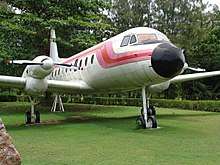
- HS 748 Srs2/243, c/n 1707 ex-Thai Airways HS-THH, at Jomtien Beach. Fuselage preserved where it crash landed in 1987. Painted in fictional camouflage.
- HS 748 Srs2a/243, c/n 1708 ex-Thai Airways HS-THI, at the Siam Country Club, Pattaya.
United Kingdom
.jpg)
_JAN_2013_(8377603326).jpg)
- Avro 748 Srs 1, c/n 1543 ex-Emerald Airways G-BEJD, at Speke Aerodrome Heritage Group, Liverpool John Lennon Airport.[41]
- HS 748 Srs2/225, c/n 1592 ex-Emerald Airways G-ATMI, nose and front fuselage at the RAF Millom Museum, Cumbria.
- HS 748 Srs2/229, c/n 1603 ex-Royal Australian Air Force A10-603, at London Southend Airport.
- HS 748 Srs2/228, c/n 1606 ex-Royal Australian Air Force A10-606, at London Southend Airport.
- HS 748 Srs2a/266, c/n 1714 ex-Emerald Airways G-OPFW, cockpit at the South Yorkshire Aircraft Museum, Doncaster.
- HS 748 Srs2a/334, c/n 1756 ex-Emerald Airways G-ORAL, nose section at the Avro Heritage Museum, Woodford, Greater Manchester.
- HS 748 Srs2a/372, c/n 1777 ex-Emerald Airways G-BVOV, fuselage underwater at the Capernwray Diving Centre near Carnforth.[42]
See also
Related development
- BAe ATP
- Hawker Siddeley Andover
Aircraft of comparable role, configuration and era
- Convair CV-240 family
- Fairchild Hiller FH-227
- Fokker F27
- Handley Page Herald
- NAMC YS-11
- Saab 340
- Grumman Gulfstream I
Related lists
References
Citations
- "Airliner price index". Flight International. 10 August 1972. p. 183.
- "Avro 748." Flight International, 18 November 1960. p. 783.
- "HS.748 looks to the 1980s." Flight International, 22 May 1976. p. 1342.
- "Avro 748 & Avro 748MF Andover." BAE Systems, Retrieved: 26 June 2019.
- "The 748 is Ten." Flight International, 2 July 1970. pp. 12-13.
- Blackman 2005, p. 265.
- Hayles-Dutton September 2020, p. 136.
- Hayles-Dutton September 2020, p. 131.
- Field, Hugh and Mike Hirst. "Coastguarder at sea." Flight International, 21 April 1979. pp. 1249-1251.
- AIB – UK Government report
- "Manorama Online Latest Malayalam News. Breaking News Events. News Updates from Kerala India". Archived from the original on 14 November 2012.
- "Archived copy". Archived from the original on 15 October 2012. Retrieved 15 November 2012.CS1 maint: archived copy as title (link)
- Archived 29 July 2013 at the Wayback Machine
- "FAC-1101 Newspaper report". elespectador.com News Website. 23 August 2009. Retrieved 23 August 2009.
- "Moily's close shave in Mangalore 30 years ago". The Hindu. 22 May 2010.
- "description". Aviation Safety Network. Retrieved 22 May 2010.
- "The Crash of Flight 710". DuQuoin.com. Retrieved 5 January 2011.
- Ranter, Harro. "ASN Aircraft accident Hawker Siddeley HS-748-FAA Srs. 2A N748LL Pickneyville, IL". aviation-safety.net.
- "Sri Lanka, since 1971". ACIG Journal. 29 October 2003. Retrieved 30 October 2008.
- "Report of SZ-OJU crash on 1 June 2002". South African Civil Aviation Authority. Retrieved 8 August 2008.
- "Cronje inquest opens – Cricket – Sport – smh.com.au". The Sydney Morning Herald. 8 August 2006.
- "Pilot error caused Cronje crash". BBC News. 14 August 2006.
- Drake, Matt (25 March 2007). "Did a cricketer kill Woolmer?". Express.
- "Plane destroyed in Northwestern Ont. fire". CBC News.
- "ASN Aircraft accident Hawker Siddeley HS-748-371 Srs 2B 5Y-HAJ Rubkona Airport". aviation-safety.net. 17 February 2014. Retrieved 18 February 2014.
- Achiek, Jacob. "Two Killed as Relief Supply Plane Crashes in South Sudan". voanews.com.
- "Canadian Civil Aircraft Register: Quick Search Result for Air Creebec"". Transport Canada. Retrieved 18 September 2018.
- "World Airline Census 2018". Flightglobal. Retrieved 27 August 2018.
- "Air North Fleet". Air North. Retrieved 16 September 2018.
- British Pathé (13 April 2014). "Austrian Airline Gets Two British Planes (1966)" – via YouTube.
- "Bop Air - Fleet - PlaneLogger".
- "AirQuarius Aviation - Fleet - PlaneLogger".
- "Executive Aerospace - Fleet - PlaneLogger".
- http://www.aviationpics.co.za/articles-aviation-pics.php?aid=2242011152538
- Hoyle Flight International 5–11 December 2017, p. 33.
- Hoyle Flight International 4–10 December 2018, p. 46.
- Hoyle Flight International 5–11 December 2017, p. 46.
- Michell, Simon (editor) (1994). Jane's Civil and Military Aircraft Upgrades, 1994–95. Jane's Information Group. ISBN 0-7106-1208-7.CS1 maint: extra text: authors list (link)
- Lednicer, David. "The Incomplete Guide to Airfoil Usage". m-selig.ae.illinois.edu. Retrieved 16 April 2019.
- "Avro 748 moves to Liverpool". Aeroplane. Cudham: Kelsey Publishing (January 2012): 11. ISSN 0143-7240.
- "New underwater attraction for divers at Capernwray". BBC News. 30 March 2010.
Bibliography
- Blackman, Tony. "Flight Testing to Win." Lulu.com, 2005. ISBN 1-4116-4825-0.
- Hayles-Dutton, Bruce (September 2020). "Database: Avro/Hawker Siddeley 748 & Andover". Aeroplane. Vol. 48 no. 9. pp. 121–136. ISSN 0143-7240.
- Hoyle, Craig (5–11 December 2017). "World Air Forces Directory". Flight International. Vol. 192 no. 5615. pp. 26–57. ISSN 0015-3710.
- Hoyle, Craig (4–10 December 2018). "World Air Forces Directory". Flight International. Vol. 194 no. 5665. pp. 32–60. ISSN 0015-3710.
- "World Airliner Census". Flight International. Vol. 184 no. 5403. 13–19 August 2013. pp. 40–58. ISSN 0015-3710.